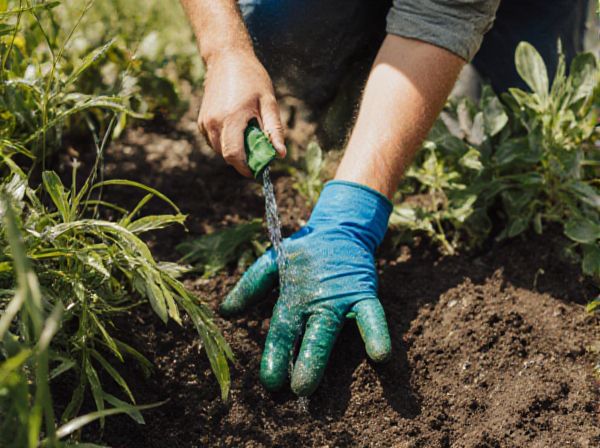
Rainwater Harvesting vs Tap Watering Illustration
Rainwater harvesting conserves natural resources by collecting and storing rainwater for irrigation, reducing reliance on treated tap water. Using rainwater minimizes water bills and decreases the energy consumption associated with municipal water treatment. This sustainable practice also lowers the environmental impact by preventing runoff and reducing demands on local water supplies.
Table of Comparison
| Feature | Rainwater Harvesting | Tap Watering |
|---|---|---|
| Source | Collected from rainfall | Municipal water supply |
| Cost | Low after setup | Recurring monthly bills |
| Water Quality | Pure, chemical-free | Chlorinated, treated |
| Environmental Impact | Reduces runoff and erosion | High energy usage, resource depletion |
| Sustainability | Renewable, eco-friendly | Limited by infrastructure |
| Availability | Dependent on rainfall | Consistent, year-round |
| Usage | Ideal for irrigation, gardening | Suitable for all household needs |
Introduction to Rainwater Harvesting and Tap Watering
Rainwater harvesting collects and stores natural precipitation for irrigation, reducing reliance on municipal tap water and conserving freshwater resources. Tap watering depends on treated municipal water supplies, often involving higher costs and energy consumption. Adopting rainwater harvesting supports sustainable gardening by minimizing environmental impact and increasing water use efficiency.
Benefits of Rainwater for Organic Gardens
Rainwater harvesting provides natural, chlorine-free water that enhances soil health and supports beneficial microbial activity in organic gardens. Unlike tap water, rainwater is typically softer and contains essential nutrients like nitrogen, helping plants grow more vigorously and resist pests. Using harvested rainwater reduces reliance on municipal supplies, promoting sustainability and conserving resources in eco-friendly gardening practices.
Tap Water: Pros and Cons for Organic Plants
Tap water provides a consistent and convenient water source for organic plants, rich in essential minerals like calcium and magnesium that support plant growth. However, tap water often contains chlorine and fluoride, which can disrupt soil microbial activity and harm sensitive organic plants. Using filtered or dechlorinated tap water helps mitigate these risks, promoting healthier soil ecosystems and better organic plant health.
Chemical Differences: Rainwater vs Tap Water
Rainwater is naturally soft and free from chlorine, fluoride, and other chemical additives commonly found in tap water, which often contains disinfectants and mineral residues. The absence of chemicals in rainwater reduces soil salinity and minimizes the risk of plant toxicity, making it ideal for organic gardening. Tap water's chemical composition can alter soil pH and negatively impact beneficial microorganisms crucial for healthy plant growth.
Soil Health Impact: Rain vs Tap Watering
Rainwater harvesting promotes superior soil health by naturally replenishing moisture and maintaining essential microbial ecosystems, unlike tap water that often contains chemicals such as chlorine and fluoride which can disrupt soil biology and reduce fertility. Utilizing rainwater reduces soil compaction and enhances nutrient retention by maintaining balanced pH levels and organic matter content. Studies indicate that rainwater irrigation increases earthworm activity and microbial diversity, contributing to improved soil structure and plant growth compared to conventional tap watering methods.
Cost Efficiency in Watering Methods
Rainwater harvesting significantly reduces water bills by utilizing free natural precipitation, making it a highly cost-efficient watering method compared to tap watering, which involves ongoing municipal water charges. Initial investment in rainwater collection systems, such as barrels or tanks, often pays off through lower utility costs and reduced reliance on treated water supplies. Over time, rainwater harvesting supports sustainable gardening practices by conserving potable water and minimizing expenses related to traditional tap water use.
Environmental Sustainability Comparison
Rainwater harvesting significantly reduces dependence on municipal tap water, conserving treated water and lowering energy consumption associated with water treatment and distribution. This practice mitigates stormwater runoff, decreasing soil erosion and water pollution, thereby enhancing local ecosystem health. Utilizing rainwater supports environmental sustainability by promoting resource efficiency and reducing the carbon footprint compared to conventional tap watering methods.
Practical Tips for Rainwater Collection
Rainwater harvesting maximizes water conservation by collecting runoff from roofs using gutters and storage tanks, reducing reliance on tap water and lowering utility bills. Practical tips for effective rainwater collection include installing first-flush diverters to avoid contaminants, using mesh screens to prevent debris, and regularly maintaining storage containers to ensure water quality. Positioning barrels near downspouts and incorporating gravity-fed drip irrigation systems enhances efficient garden watering while promoting sustainable organic practices.
Legal and Safety Considerations
Rainwater harvesting regulations vary significantly by region, often requiring permits to ensure compliance with local water management laws and prevent contamination risks. Tap water systems must adhere to strict municipal safety standards, guaranteeing consistent quality and safeguarding public health through regular testing and treatment. Legal frameworks emphasize the importance of proper installation and maintenance in both methods to avoid waterborne diseases and ensure sustainable usage.
Choosing the Best Watering Method for Organic Gardens
Rainwater harvesting conserves natural resources and reduces reliance on treated tap water, providing nutrient-rich, chlorine-free water ideal for organic gardens. Tap water, while more accessible and consistent, often contains chemicals that can disrupt soil microbiomes and harm sensitive plants. Selecting the best watering method depends on garden size, local rainfall patterns, and water quality, with rainwater harvesting typically favored for sustainable organic gardening practices.
Rainwater Harvesting vs Tap Watering Infographic

 gardendif.com
gardendif.com